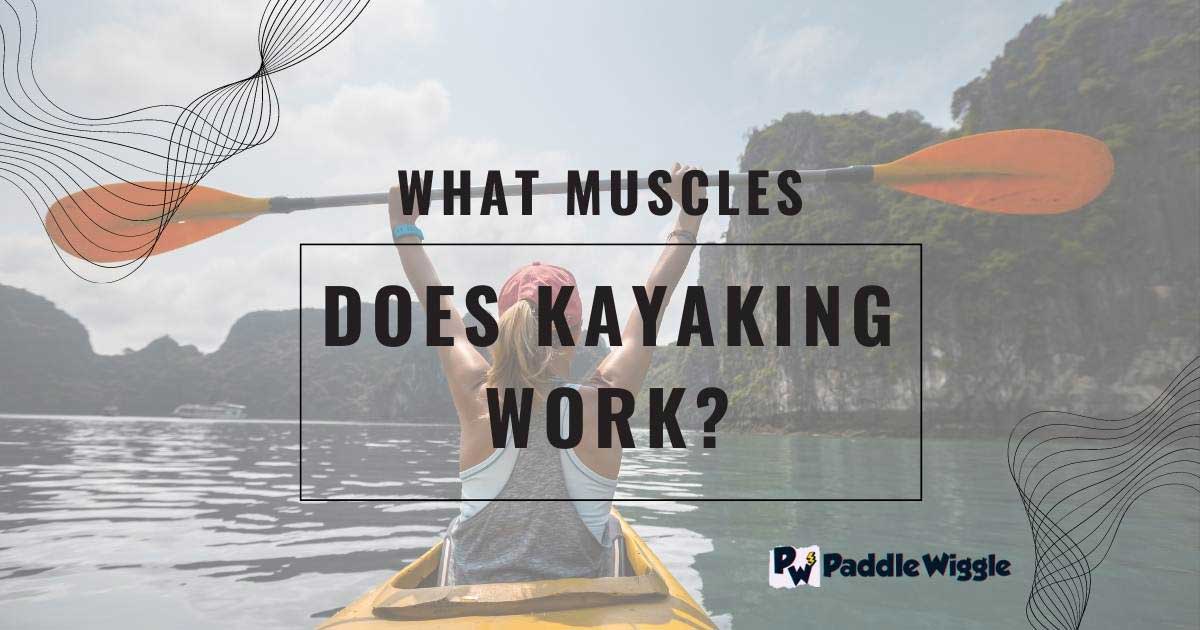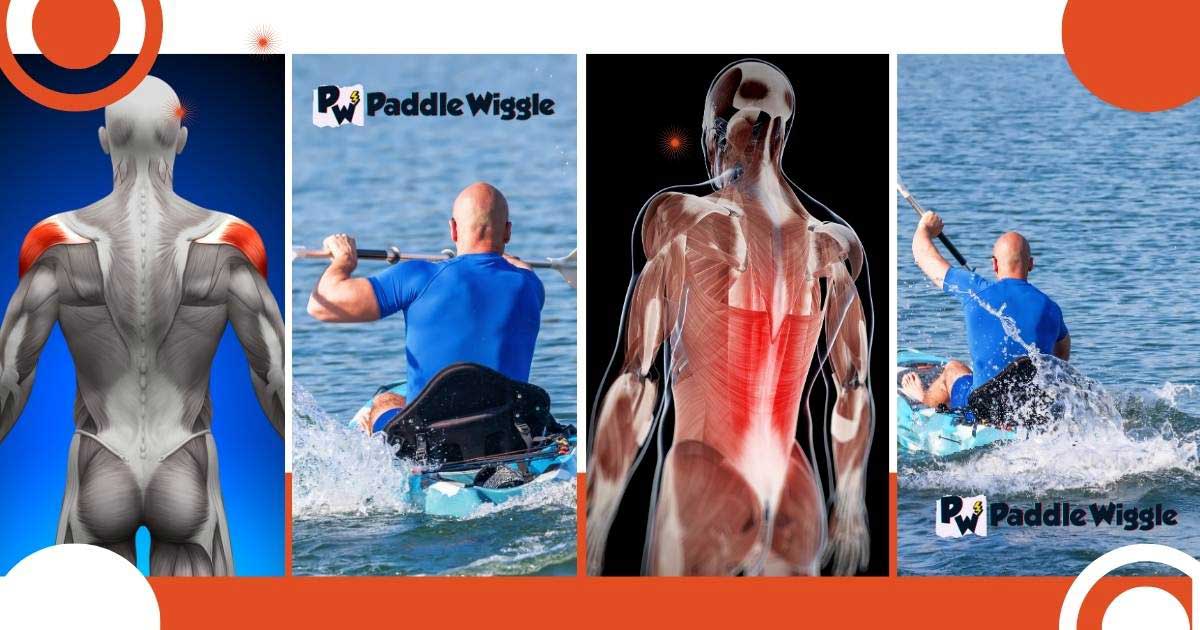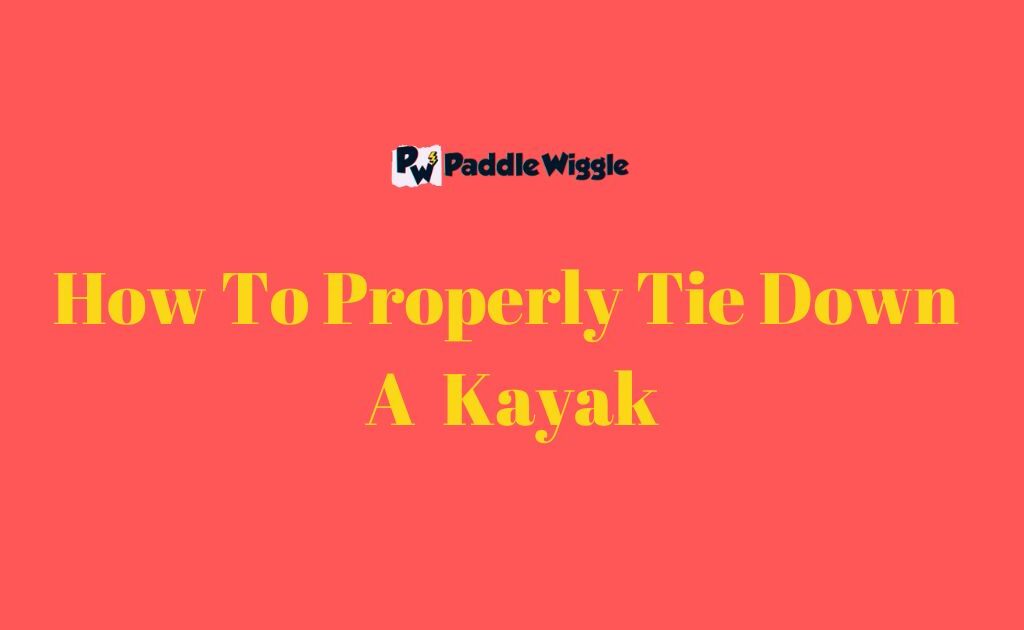Kayaking is a fun and exhilarating outdoor activity that provides a great workout and allows you to explore the beauty of nature. If you’re wondering what muscle kayaking works, there are quite a few!
Kayaking primarily targets the upper body muscles, including the arms, shoulders, and back. However, it also requires the engagement of several other muscle groups in your body to keep you balanced and stable on the water.
Let’s take a closer look at some of the key muscles that kayaking works:
• Abdominal muscles (Rectus Abdominis and Obliques)
• Lower back muscles (Erector Spinae)
• Biceps
• Triceps
• Lats
• Deltoids (shoulder)
• Quadriceps (thighs)
• Hamstrings (back side)
• Glutes (buttocks)
• Calves
• Trapezius (upper back)
• Rhomboids (middle back)
• Forearms
• Wrist Extensors
• Wrist Flexors
Now, let’s dive deeper into the muscles that kayaking works and how this activity can benefit your overall physical fitness.


Contents
What muscles does kayaking work?
Kayaking is an excellent way to exercise your muscles. When you paddle a kayak, you use your arms, shoulders, and back muscles to propel it forward. Kayaking uses the triceps, biceps, deltoids, rhomboids, latissimus dorsi (lats), and teres major muscles. Each stroke you make requires these muscles to work together.
The muscles used in kayaking can be divided into three categories: upper body, core, and lower body muscles. Each muscle group provides stability, balance, and propulsion to the kayak.
Upper Body Muscles Work in Kayaking
The upper body muscles used in kayaking are the chest, back, and shoulder muscles.
Chest Muscles (Pectoralis Major and Minor)
The pectoralis major and minor muscles, commonly known as the chest muscles, are located in the front of the upper body. These muscles are used when paddling the kayak and help to move the arms forward and backward.
Strengthening the chest muscles can improve the power and efficiency of your paddling stroke. Additionally, a muscular chest can help to prevent injury and reduce the risk of shoulder pain.
Back Muscles (Latissimus Dorsi and Trapezius)


The back muscles used in kayaking are the latissimus dorsi and trapezius muscles. These muscles are located in the upper back and are essential in kayaking.
The latissimus dorsi muscle pulls the paddle through the water, while the trapezius muscle provides support and stability to the upper body. Strong back muscles can help to prevent injury and improve overall posture.
Shoulder Muscles (Deltoids and Rotator Cuff)
The shoulder muscles used in kayaking are the deltoids and rotator cuff muscles. These muscles are responsible for the movement of the arms and provide stability to the shoulders.
Strengthening the shoulder muscles can improve the power and efficiency of your paddling stroke. Also, strong shoulders can help prevent injury and reduce the risk of shoulder pain.
Core Muscles Work in Kayaking
The core muscles used in kayaking are the abdominal and lower back muscles.
Abdominal Muscles (Rectus Abdominis and Obliques)
While kayaking, the rectus abdominis, and oblique muscles provide stability and balance to the body.
And you can improve posture, reduce injury risk, and stay stable by strengthening your abdominals.
Spinal Muscles (Erector Spinae)
And when you paddle, the erector spinal muscles support and stabilize the back.
By strengthening the erector spinal muscles, you’ll improve posture, reduce the risk of injury, and have a more stable core.
Lower Body Muscles Work in Kayaking


The lower body muscles in kayaking are the quadriceps, glutes, hamstrings, and calves.
Quadriceps Muscles (Glutes, Hamstrings, Calves)
Kayaking requires your quadriceps. As you paddle, your quadriceps muscles use your glutes, hamstrings, and calves to power and propulsion your kayak.
Adding quadriceps strength can improve your paddling stroke’s power and efficiency. As well as preventing knee pain, strong quadriceps can help you avoid injury.
Does Kayaking Work Your Legs?
Yes, kayaking is a great way to work your legs! It uses similar muscles to rowing, canoeing, and stand-up paddleboarding. You’ll need lower body strength, power, and endurance for all these activities.
When you kayak, your legs, hips, and core muscles work together to propel the boat. It’s a high-intensity, low-impact workout that tones and strengthens your leg muscles. Plus, it improves balance and coordination.
Benefits of Kayaking for Muscle Development
Now that we know which muscles are used during kayaking let’s explore how it contributes to overall fitness. Here are some ways kayaking improves your physical health:
Improved Upper Body Strength
Kayaking provides an excellent workout for your arms, shoulders, chest, and upper back muscles. As you paddle through the water, these muscle groups work together to propel the kayak forward. Regular kayaking can help build and tone these muscles, improving upper-body strength.
Improved Lower Body Strength
While your legs may not work much while kayaking, they still stabilize your lower body. This stabilization requires the engagement of your leg muscles, including your quads, glutes, and calves. Regular kayaking can help strengthen these muscles and improve overall lower body strength.
Enhanced Core Strength
Your core muscles are critical in maintaining stability and balance while kayaking. As you paddle through choppy waters or navigate tight turns, your core muscles work together to keep you upright and prevent you from tipping over. Regular kayaking can help strengthen your core muscles resulting in enhanced core strength.
Improved Cardiovascular Fitness
Kayaking is an excellent cardiovascular workout that gets your heart pumping. The repetitive motion of kayaking through the water provides a low-impact aerobic workout that can help improve cardiovascular fitness levels.
Increased Endurance and Stamina
Kayaking requires both endurance and stamina to maintain long paddling periods without fatigue. Regular kayaking can help develop endurance and stamina levels as you gradually increase the time spent on the water.
Beginners Tips To try kayaking for muscle development
Kayaking is a fun and effective way to build muscle and improve overall fitness. If you’re a beginner, some tips can help you get started and make the most out of your kayaking workout.
Proper Warm-up Exercises Before Kayaking
Before you hit the water, take some time to warm up your muscles with a few simple exercises. Start with some light cardio activities like jogging or jumping jacks to get your heart rate up and increase blood flow to your muscles. You can also do stretching exercises focusing on your shoulders, arms, back, and core.
Appropriate Gear and Equipment Needed for Safe and Comfortable Kayaking
Kayaking is safe and comfortable when you have the right gear. To start, wear lightweight shorts or pants. Usually, these are made from quick-drying material. And choose a shirt that won’t restrict your arm movement.
Also, you’ll need a kayak paddle that matches your trip plan.
There’s also a floating device, whistles, whitewater kayak helmets, and spray skirts that you’ll need.
Importance of Supervised Training or Lessons Before Attempting Solo Paddling
To stay safe, you should take lessons from certified trainers even if you’ve seen others paddle or have an idea through online tutorials.
Training under an experienced instructor can help you learn proper paddling techniques. It will also help you prevent accidents due to a lack of knowledge about proper posture, steering, and turning techniques.
Before branching out on your own, practice the proper techniques in a safe and controlled environment. This will help you get comfortable with your kayak and build strength gradually.
Final Words
Ultimately, kayaking is a great way to strengthen the upper body, core, and lower body muscles. By strengthening these muscles, you can reduce the risk of injuries and improve performance on the water. To improve your kayaking experience, incorporate proper training and conditioning techniques. So next time you hop into your kayak, pay attention to the muscles you engage in and take good care of them.



